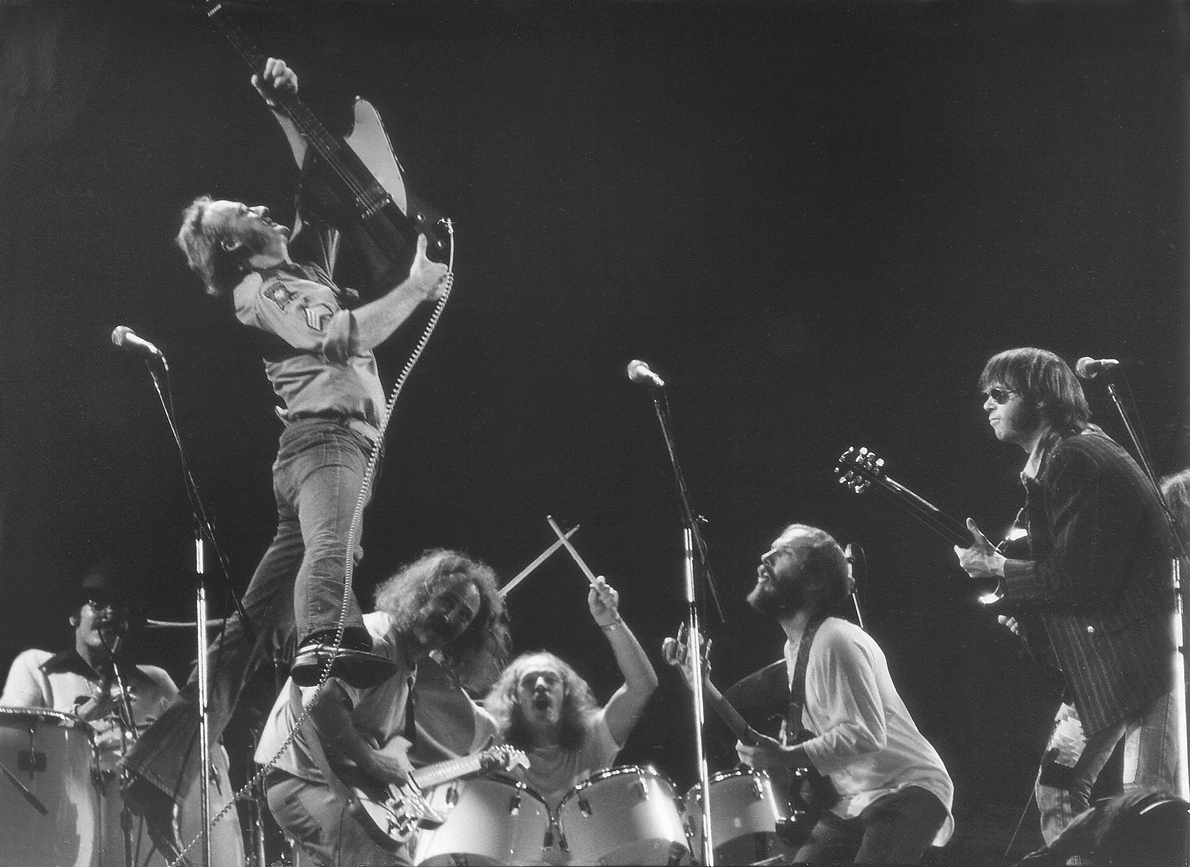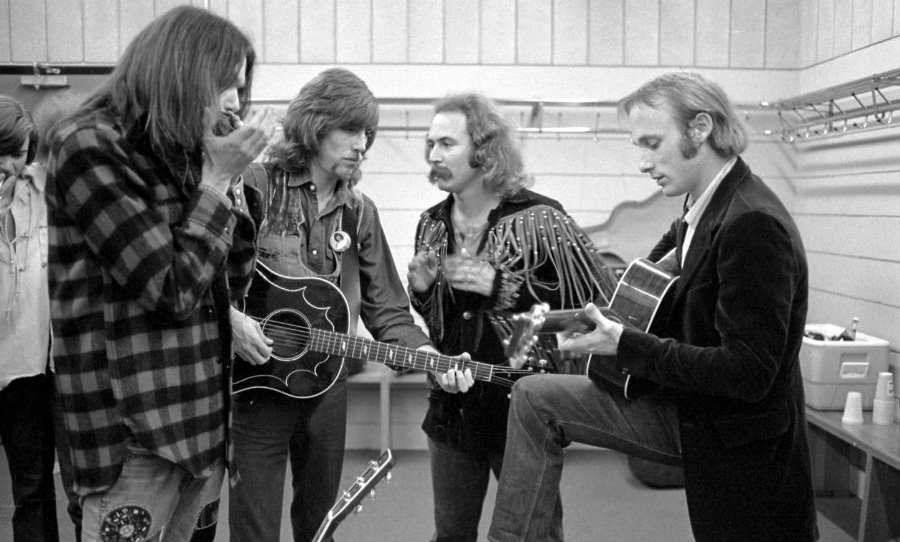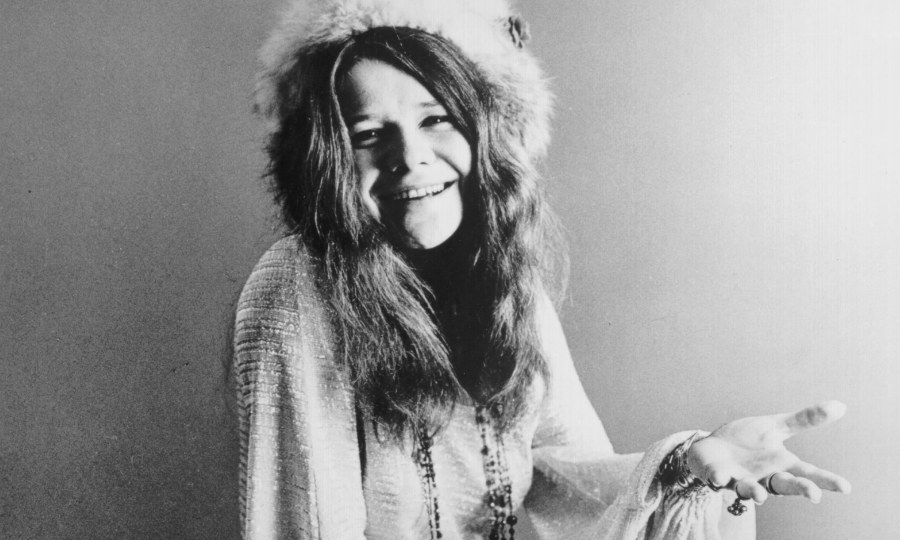David Crosby, Stephen Stills and Graham Nash set an incredibly high bar with their 1969 debut. In hindsight, adding Neil Young to the highly potent supergroup was a stroke of genius, though at the time Young was relatively unknown. Truth be told, nobody knew the result of an album as simply singular as Déjà Vu.
The original trio struck a balance of folk, rock, and their immaculately intricate three-part harmonies, the likes of which had never been heard before.
Here is the story of one incredible album and our willingness to endlessly experience, absorb, and submit to Déjà Vu.
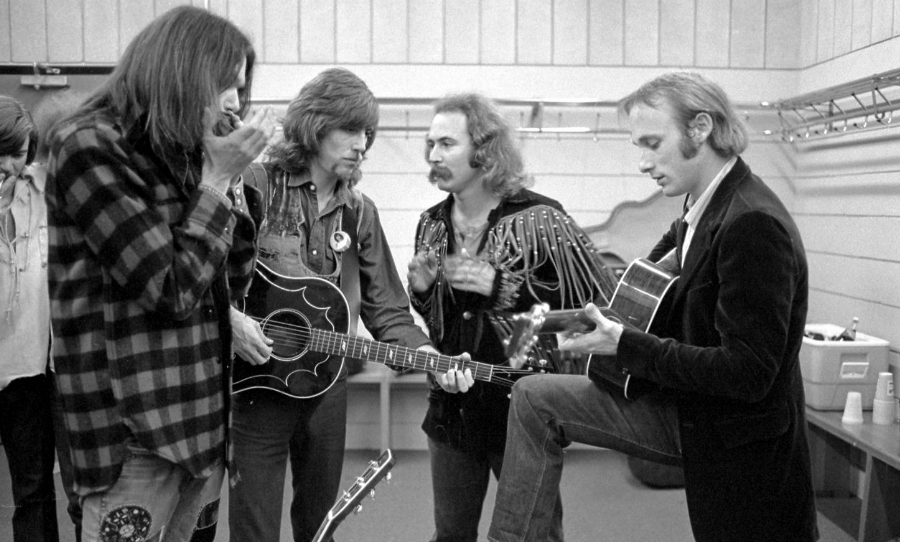
Neil Young was the fourth pillar to the harmonic empire of Crosby, Stills and Nash. Their sophomore album Déjà Vu remains a landmark moment for folk-rock.
Once upon a time, Joni Mitchell and Mama Cass threw a party. This was a time when going to parties could inadvertently make musical history. By the late 1960s, talent was brimming in the rolling foothills of Laurel Canyon.
Graham Nash, David Crosby and Stephen Stills knew each other through ‘the scene’ but on this particular night the trio heard their voices harmonise together for the first time and a new beast was born out of the ashes of The Byrds, Buffalo Springfield and The Hollies.
In a dazzling act of prescience, they named their supergroup Crosby, Stills and Nash, warily using their last names so that they could not continue if one were to leave. A lesson Cream, Blind Faith, and Parliament–Funkadelic could have heeded.

Their eponymous debut album was a major hit though it also illuminated a single glaring problem within the outfit. Multi-instrumentalist Stephen Stills had recorded almost everything on the album. As Nash recalls, the addition of a fourth member became a necessary evil.
“When we finished the first record, we realized two things: One, that we had a big hit on our hands because everybody was just wiped on the floor with it, and two, that we would have to go on the road,” Nash told Music Radar. “Stephen played every instrument on that record except for the drums and the acoustic guitars that David and I played on our songs. He played bass, he played organ, he played lead guitar, he played rhythm guitar, he played everything. Captain Many Hands we called him.”
Jimi Hendrix and Steve Winwood were asked to join CSN but they unsurprisingly declined. Atlantic Records’ had made a definitive shift from jazz by 1970 thanks to spearhead Ahmet Ertegun, who suggested stills former Buffalo Springfield bandmate Neil Young.
Nash was less than enthused by the idea but agreed to meet with Young in New York City’s Greenwich Village.
“I didn’t think we needed anybody else, but I said, ‘Okay, if you’re so adamant, I have to meet this guy,'” Nash recalled. “I knew him as a songwriter, but I didn’t know if I’d like him, if I could hang with him — all of that stuff. So I had breakfast with Neil on Bleecker Street, and after that I would have made him king of the world. He was funny, he was dry, he was dedicated and he was a special man. I realized that right off.”
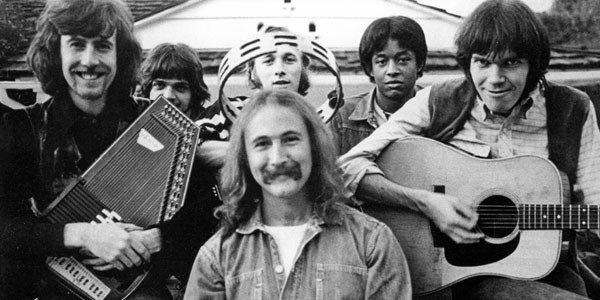
In the summer of 1969, Crosby, Stills, Nash & Young delivered a blistering performance at Woodstock where they played one of the first versions of 4+20, before diving into the studio to record Déjà Vu.
At Wally Heider’s Studio in Los Angeles, the group was further strengthened by the addition of bassist Greg Reeves and drummer Dallas Taylor.
Significant turmoil had occurred in the band’s personal lives however and it carried into the studio. Stills had split with singer Judy Collins; Nash broke up with Joni Mitchell, and Crosby’s girlfriend Christine Hinton had recently died in a car accident.
“I was at the worst place I’d been in my whole life. I would walk into the sessions and break down crying,” Crosby told Crawdaddy in 1974. “I couldn’t function. I was in love with that girl.”
“Atmosphere and feeling – now, they count for much more than the actual technical quality of the music. During Déjà Vu, I felt awful. To me, it communicates. There’s good art on Déjà Vu, but you can’t put it on and feel like it’s a sunny afternoon the way you can with Crosby Stills & Nash.”
The album’s biggest single was Woodstock. Interestingly it was also the only song not composed by a member of the band. The track that peaked at No. 11 on the Billboard Charts was composed by Nash’s former partner Joni Mitchell while in New York City as she read news reports of the historic happening.
Crosby penned Almost Cut My Hair to highlight, and somewhat dissolve, the divisions between hippies and the establishment. He also wrote the title track, which is a reference to the Nietzschean theory of eternal recurrence and Buddist karma.
“I’m one of those people who thinks we go round again,” Crosby told The Guardian. “The Buddhists have got it right — it’s a wheel and we get on and get off. I think life energy gets recycled. That’s why I wrote Déjà Vu.”
Stephen Stills contributed Carry On, a harmony-rich rocker that opens the record, as well as 4+20. Nash wrote two of the three hit singles on the album, Teach Your Children featuring the stylish steel guitar work of Jerry Garcia.
The tender Our House was written while Nash lived with Mitchell at their Laurel Canyon home and feels all the more fitting alongside Joni’s Woodstock.
Along with Country Girl, Neil Young wrote Helpless, providing one of the albums most emotive moments, though Nash remembers it somewhat differently:
“The only track that I remember we played on together was Helpless, and it was only at three in the morning when we’d run out of cocaine and we could play slow enough for Neil to dig it. Neil would record in Los Angeles, then he’d bring the recording to the studio and we’d put our voices on, and then he’d take it away and mix it himself.”
Unsurprisingly, fans loved it and the record blew up to No.1 after its release on March 11, 1970. After 50 years the album has remained a timeless classic and a high mark in acoustic songwriting and vocal harmony.
Reflecting the Americana sound of the ’60s, idyllic love, and documenting Woodstock have allowed the album to distil a certain essence of the time, being a constant reminder that four egoless stars can align to achieve greatness.
